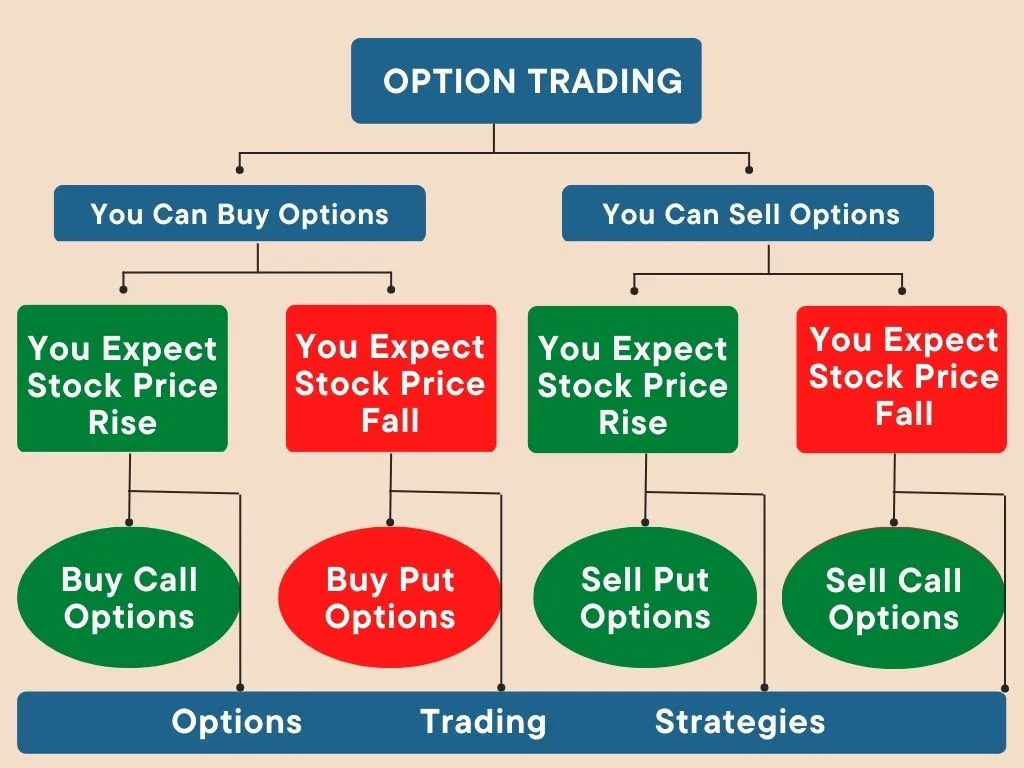Introduction
Have you ever pondered the complex world of options trading? These intriguing financial instruments can open up a realm of possibilities for those seeking to enhance their investment strategies. Whether you’re a seasoned trader or just starting your journey into the world of finance, understanding how option trading works is crucial for navigating this dynamic market successfully.
In this comprehensive guide, we will delve into the intricacies of option trading, exploring its history, fundamental concepts, real-world applications, and the latest trends. By providing you with a thorough understanding of this multifaceted topic, we aim to empower you with the knowledge and insights necessary to make informed decisions in the ever-evolving world of financial markets.

Image: www.angelone.in
The Genesis of Option Trading: A Historical Perspective
The origins of option trading can be traced back to ancient Greece, where merchants and traders sought to manage risk and capitalize on price fluctuations in agricultural commodities. The formalization of option contracts, however, took shape much later, with the establishment of regulated exchanges in the 19th century. The Chicago Board of Trade (CBOT) emerged as a pioneer in the field, introducing standardized option contracts in 1973. This marked a significant turning point in the evolution of options trading, paving the way for widespread adoption and accessibility.
Unveiling the Essence of Option Trading: Basic Concepts
At its core, option trading involves buying or selling contracts that grant the holder the right, but not the obligation, to buy or sell an underlying asset at a predetermined price and time. These contracts, known as options, convey specific privileges and responsibilities. There are two main types of options: calls and puts. Call options give the holder the right to purchase the underlying asset, while put options provide the right to sell. The strike price represents the agreed-upon price at which the option can be exercised. The expiration date establishes the final day on which the option can be executed. By understanding these fundamental concepts, you gain a solid foundation for navigating the world of option trading.
Delving into Real-World Applications: Options in Action
Option trading finds widespread application in the financial realm, serving a variety of purposes for both individuals and institutions. Some of the most common strategies include:
- Hedging Risk: Options provide a valuable tool for managing risk by allowing traders to lock in a price or protect against unfavorable market movements.
- Speculation: Traders can use options to speculate on the price movements of underlying assets, potentially generating significant profits if their predictions hold true.
- Income Generation: Selling options, also known as option writing, can provide a source of income through premiums received by the option seller.
- Volatility Strategies: Options can be used to exploit price fluctuations in volatile markets, offering opportunities for both profit and risk management.

Image: changehero.io
Exploring the Nuances: Mechanics of Option Trading
To execute an options trade, investors must first open an account with a brokerage firm that offers options trading services. The process of buying or selling options involves specifying the type of option (call or put), the underlying asset, the strike price, the expiration date, and the number of contracts desired. Once an order is placed, it enters the market and is matched with an opposing order at or near the quoted price. Understanding the mechanics of option trading is essential for effective execution of trades and risk management.
Navigating Market Dynamics: Factors Influencing Option Prices
The pricing of options is influenced by a combination of factors, including the underlying asset’s price, time to expiration, implied volatility, interest rates, and supply and demand. Implied volatility, a key metric in options trading, reflects market expectations of the underlying asset’s price fluctuations. Traders must consider these factors and their interrelationships to make informed decisions about option pricing and trading strategies.
Embracing the Technological Revolution: The Role of Technology in Option Trading
Technological advancements have revolutionized the practice of option trading, making it more accessible and efficient than ever before. Online trading platforms provide a user-friendly interface for executing trades, monitoring positions, and researching market data. Sophisticated software tools assist traders in analyzing price charts, identifying trading opportunities, and managing risk. Embracing technology empowers traders to make informed decisions and enhance their trading strategies in today’s fast-paced markets.
How Is Option Trading Done
The Future of Option Trading: Emerging Trends and Insights
The world of option trading is constantly evolving, with new trends and developments emerging regularly. One significant trend is the rise of mobile trading, enabling investors to access markets and execute trades from their smartphones or tablets. Artificial intelligence (AI) is also gaining traction, offering automated trading strategies, risk management tools, and personalized trading recommendations. Understanding these emerging trends keeps traders at the forefront of innovation and provides them with a competitive advantage.






